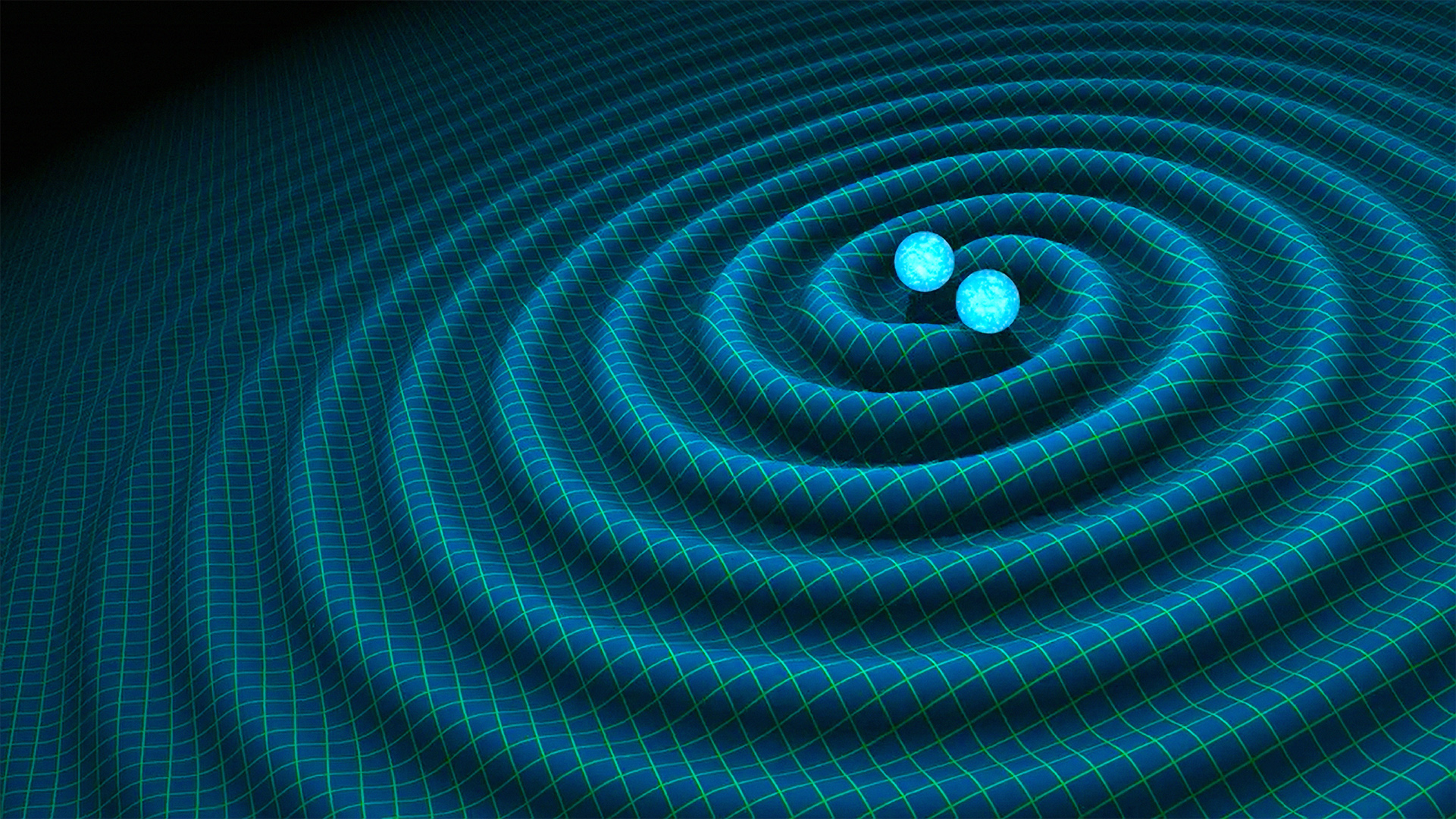By Steven van de Graaf
On February 11 2016, after weeks of rumors and speculation, physicists from the Laser Interferometer Gravitational-Wave Observatory (LIGO) announced the discovery of gravitational waves. This announcement prompted a lot of excitement from the scientific community, as the discovery was the result of a century of speculation, and also 50 years of hard work and dedication of physicists from all around the world.
So what exactly is a gravitational wave? A gravitational wave is a ripple in the fabric of space and time, produced whenever two masses accelerate. In theory anything that has mass or energy (including you and I) can produce these waves, but usually these gravitational waves are too weak to be tested, so only the most massive objects (like neutron stars or black holes) can produce detectable waves.
Whenever a gravitational wave passes through space, it both stretches space in one direction, and compresses space into the other. The physicists at LIGO used this knowledge, combined with the fact that the speed of light is constant, to detect the waves.
Gravitational waves were first predicted in 1916 by Albert Einstein on the basis of his theory of general relativity. In his theory of general relativity, gravity is the result of the curvature of space-time. This curvature is caused by the presence of mass, and the bigger the mass, the greater the curvature. This resembles placing a bowling ball on a trampoline; the surface of the trampoline will be curved as a result of the bowling ball. When trying to roll a smaller ball from one side of the trampoline to the other, it will now be attracted by the bowling ball due to the curvature of the trampoline.
A major step towards the discovery was made in 1974, when Hulse and Taylor discovered the first “binary pulsar”, a pulsar orbiting a common center of mass with another neutron star. Their observations showed that the pulsar’s orbit was gradually contracting, which was in perfect alignment with the loss of energy due to gravitational waves. Exactly what Einstein had predicted (58 years) earlier. The two physicists ultimately won the Nobel Prize for their groundbreaking discovery that opened up new possibilities for the study of gravitation.
One should not forget the amount of work that had to be put in this project. A large part of this hard work consisted of refining the measuring equipment. PhD Comics described the precision of the equipment as “like being able to tell that a stick 1,000,000,000,000,000,000,000 meters long has shrunk by 5mm.”
The detectors themselves are laser interferometers, large L-shaped constructions with both arms stretching out 4 kilometers. The LIGO team sent a beam of light down both arms, measuring the time difference between the return of both beams. If a difference was measured, it could then only be the result of gravitational waves, stretching and compressing space in different directions, which is what was announced last February.
With announcements like these, people often ask “But what is the use of this exactly, what are the practical applications?” First and foremost, gravitational waves help us in understanding the universe better than before. Think of it as having been deaf for your entire life, until your hearing is suddenly restored. Now you have a whole new way to explore life around you. And that’s exactly what this observation helps us to do, exploring the universe in an entirely new way.
This discovery also allows us to test Einstein’s theory of general relativity further. Gravity is the force that keeps our entire universe together, but it is also a very force in comparison to most other forces- such as the strong force which holds the protons and the neutrons in the atom’s nucleus together- making it very difficult to test it. That is why we need exceptionally big masses to conduct experiments about gravity, such as the observation of gravitational waves. Ultimately, all applications regarding the announcement on these waves have to do with research, but the window it gives us into understanding the most extreme environments in our universe is well worth the money and effort.
Steven van de Graaf, Class of 2017, is a Physics, Mathematics, and Computer Science major from Barendrecht, The Netherlands

